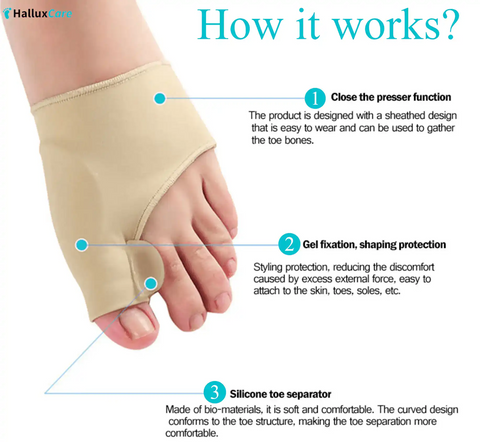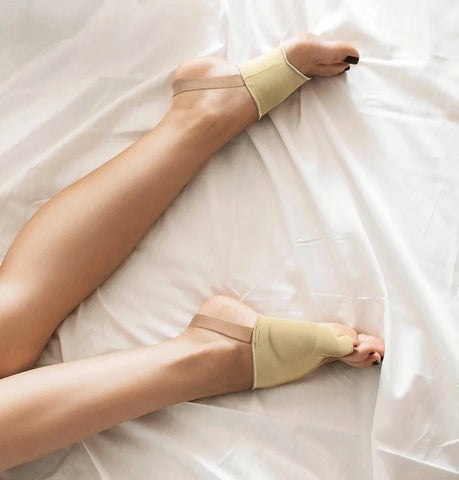Recovering from Bunion Surgery: Real Advice, Real Results
Last Updated: April 2025 | Written by Dr. Megan Sanders, DPM, Board-Certified Podiatrist
If you've recently undergone bunion surgery or are considering it, you're not alone. According to the American Orthopaedic Foot & Ankle Society, over 150,000 bunion surgeries are performed annually in the U.S. alone. Bunion correction can be transformative—especially for athletes and active individuals dealing with hallux valgus pain, joint stiffness, or mobility limitations.
In this guide, we’ll combine real-world recovery insights from patients—like this honest Reddit user—with evidence-based recommendations from podiatric experts. Whether you're in the early stages of healing or planning your surgery, this article will help you navigate the road to recovery with clarity, confidence, and comfort.
Why Early Bunion Surgery Matters – Especially for Athletes
Delaying bunion surgery can lead to long-term complications, particularly for those who live an active lifestyle. A Reddit user shared a cautionary tale: post-surgery, their doctor found unexpected arthritis and cartilage damage—likely due to years of postponing surgery.
Here’s why early intervention is important:
- ⏳ Delaying surgery may result in a 10–15% loss in foot flexibility, which is critical for athletic performance and mobility (Journal of Foot and Ankle Research).
- 🦶 Early correction helps preserve joint integrity and prevent progressive deformity.
- 🏃 Younger, healthier bodies tend to recover faster, with fewer complications.
4.9 ⭐⭐⭐⭐⭐ ( 1843 reviews )
Physical Therapy: The Unsung Hero of Bunion Recovery
Many patients underestimate the importance of physical therapy (PT) during the post-operative phase. However, studies confirm that PT can significantly reduce recovery time and restore mobility after bunion correction (Journal of Physical Therapy Science).
Why PT Matters:
- 💪 Helps rebuild strength in the intrinsic foot muscles and stabilizing structures.
- 🔄 Improves joint flexibility and range of motion, especially in the big toe (also known as the first metatarsophalangeal joint).
- 🧠 Boosts proprioception and confidence in walking, reducing the fear of reinjury or imbalance.
Practical Tip: If your surgeon doesn’t automatically refer you to a physical therapist, ask for a referral or seek out a foot and ankle specialist. Consistent at-home exercises, such as toe curls and towel scrunches, can also supplement in-office therapy.
Staying Positive During Recovery
Bunion recovery isn’t just physical—it’s emotional, too. Many people feel discouraged by the slow pace of healing, pain, or temporary immobility. That’s completely normal.
Here are a few ways to stay mentally strong:
- 🎯 Set realistic, achievable goals—like walking unassisted for five minutes or going up stairs without pain.
- 🧘 Practice mindfulness or breathing exercises to manage stress and pain perception. Apps like Headspace or Calm can be helpful.
- 📈 Track your milestones in a journal or app—seeing progress (even small wins) builds motivation.
Pro Tip: Join online recovery forums or social media support groups for encouragement, advice, and shared experiences.
Supportive Products That Make a Difference
The right products can significantly improve comfort and promote healing during recovery. From cushioning sleeves to anti-inflammatory oils, these tools can ease pain and protect surgical areas.
If you're looking for relief from bunion pain, consider using the Orthopedic Bunion Pain Relief & Correction Sleeve, which provides support and helps to alleviate discomfort.
For additional protection, the Tailor's Bunion Bunionette Pain Relief Protection Sleeves are designed to offer comfort and protection for bunionette pain.
To nourish and soothe the skin around bunions, as well as to promote healthy hair, consider the Jamaica Black Castor Oil Soothing Oil. Known for its moisturizing and anti-inflammatory properties, it helps alleviate discomfort around bunions and supports hair growth and scalp health.
Key Takeaways
- Act early: Surgery before severe joint damage increases your chances for a quicker and fuller recovery.
- Don’t skip therapy: Physical therapy is essential to restore strength and range of motion.
- Stay positive: Emotional resilience is key—track progress, set goals, and seek support.
- Use the right tools: Orthopedic sleeves, oils, and supports can reduce pain and enhance healing.
FAQs
Q: How long does bunion surgery recovery take?
A: Recovery can vary based on the type of surgery, but most patients return to normal walking within 6–12 weeks. Full recovery, including return to sports or high-impact activities, may take 3–6 months (FootCareMD).
Q: Is physical therapy required after bunion surgery?
A: While not always mandated, physical therapy is highly recommended to improve outcomes and reduce stiffness. Your provider can help create a personalized rehab plan.
Q: Can bunions come back after surgery?
A: Recurrence is possible, especially if post-surgical care and footwear choices are not optimal. Wearing supportive shoes and following your rehab plan helps reduce the risk.
Q: Are bunion sleeves effective post-surgery?
A: Yes. Orthopedic sleeves can help cushion the surgical area, reduce swelling, and promote proper toe alignment during recovery.
Final Thoughts: Your Recovery, Your Journey
It’s encouraging to hear stories like the one shared on Reddit—real people seeing real results. Whether you’re an athlete or simply want to walk pain-free, know that every step forward—no matter how small—gets you closer to your goal.
💬 Have you had bunion surgery? What helped you most during recovery? Share your experience in the comments below to support others on the same path.
Let’s build a community of support—one step at a time.




